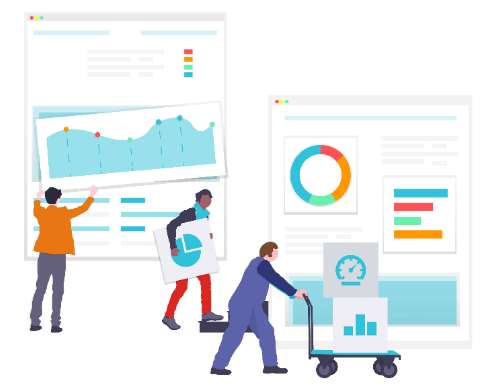Why the change?
A lot of people are questioning why Google is moving to a new analytics property now.
There so much changing in the tracking world with cookies being phased out, iOS14 throwing a spanner in the works, and everyone being left to scramble for ways to collect first party data as a result. But this has actually been in the making for a long time; since 2014, in fact, when Google acquired Firebase.
Firebase is a platform for creating mobile and web applications that uses the event-based model (it can report on up to 500 distinct events) to track behaviour and measure user engagement, and it’s the backend for GA4.
Large advertisers like Uber, Expedia, Spotify, Alibaba (and the list goes on and on) are using progressive web apps (PWAs) to meet the needs of their consumers. PWAs are apps that are written to run inside web browsers.
Where a native app is downloaded on to a device, PWAs combine the features of an app with the ready availability of the web. The clincher though? PWAs don’t generate page loads as the user navigates through the site so tracking using Universal Analytics is fraught with blind spots.
When you look at this way, GA4 is the natural evolution of tracking. Big advertisers need this type of solution and if Google doesn’t provide it, rest assured their competitors will soon enough.
By incorporating Firebase Analytics, GA4 will facilitate the collection, measurement, and analysis of data from websites and apps in the same space.
As a result, marketers will have greater insight into user experience, a better understanding of their customers and more accurate ways to measure campaigns that run across platforms.
GA4 also harnesses the power of machine learning and uses statistical modelling to work with or without cookies. In ‘Introducing the new Google Analytics‘ on the company’s blog, Vidhya Srinivasan, Google Ads VP/GM Buying, Analytics and Measurement, said:
GA4 is designed to adapt to a future with or without cookies or identifiers. It uses a flexible approach and will include modelling to fill in the gaps in incomplete data. This means you can rely on GA4 to help measure your results and meet customer needs now as you navigate the recovery.

Right, I know I need to act – what's the plan?
Basically, don’t delay:
- Set GA4 up immediately: If you want to do any form of year-on-year comparison, you need GA4 to be fully functioning within the next three months.
- Run Universal and GA4 concurrently: It’s best run both Universal Analytics and GA4 in parallel. Let GA4 collect data until it becomes the primary platform but stick with Universal Analytics for now as it currently offers better reporting.
- Training and utilisation: Use the cross-over time to get familiar with the new interface, metrics, and reports in GA4 so when it becomes your only option, you’re ahead of the curve.
- Extract your data: It’s painful to think about all the data that will be lost.
Conclusion
While acting now will mean you’ll have access to one year of comparison data, in the scheme of things, that’s not much to work with and without stored data, your only alternative will be to rely on spreadsheets to collate your information.
Indago offers data insights solutions that can extract and store all the data you’ll need, align it with your new GA4 data and give you the ability to analyse the results using data visualisation for years to come.
By acting now and storing your data for future visualisation, you can safeguard your business against this looming deadline and the data void it’s destined to create.
Written by
Preet Singh





